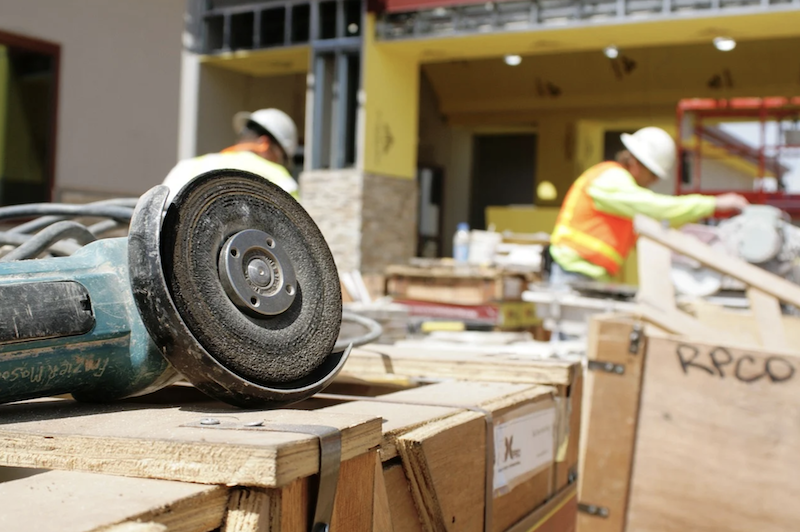Total construction spending ticked up from June to July, as gains in residential and public construction offset a dip in private nonresidential projects, according to a new analysis of federal construction spending data the Associated General Contractors of America released today. Officials noted, however, that challenges remain for the industry, particularly because of continuing problems with coronavirus flare-ups and supply-chain disruptions.
“Although nonresidential construction is no longer in free fall, many categories face continuing challenges,” said Ken Simonson, the association’s chief economist. “The rapid spread of the delta variant of COVID-19 is causing a pullback in re-openings and travel that may lead some owners to postpone new projects. Meanwhile, materials price increases, limited supplies of key materials, and long or uncertain delivery times are impeding the industry’s recovery.”
Construction spending in July totaled $1.57 trillion at a seasonally adjusted annual rate, an increase of 0.3% from June, and 9.0% higher than the pandemic-depressed rate in July 2020. Once again, residential construction saw monthly and year-over-year gains, while nonresidential construction spending posted mixed results. The residential construction segment climbed 0.5% for the month and 26.5% year-over-year. Combined private and public nonresidential construction spending inched up 0.1% compared to June but declined 4.2% compared to July 2020.
Private nonresidential construction spending fell 0.2% from June to July and 3.6% since July 2020. The largest private nonresidential category, power construction, decreased by 0.7% from June to July and 0.9% year-over-year. Among the other large private nonresidential project types, commercial construction—comprising retail, warehouse and farm structures—was essentially unchanged for the second month in a row but higher than in July 2020 by 4.6%. Manufacturing construction spending was also nearly unchanged for the month and up 1.8% from a year earlier. Office construction decreased 0.1% compared to June and 6.1% year-over-year.
Public construction spending increased 0.7% for the month but was 5.1% lower year-over-year. Among the largest segments, highway and street construction gained 1.9% compared to June but dipped 0.1% over 12 months. Public educational construction fell 0.5% in July and 6.4% year-over-year. Spending on transportation facilities was up 0.3% from June but fell 4.2% from July 2020.
Association officials said the spending figures highlight some of the challenges the industry is facing amid a resurgent coronavirus and ongoing supply chain problems. They added that the association will release more details on how demand for new projects and workforce supply are being impacted by the coronavirus during a virtual media event at noon on Thursday, September 2nd with Autodesk.
“We are starting to get a more complete picture of how the resurgent coronavirus and policy responses to it are impacting the construction industry,” said Stephen E. Sandherr, the association’s chief executive officer. “The industry will not be out of the woods without new federal infrastructure investments and support for workforce development.”
Related Stories
Industry Research | Oct 25, 2016
New HOK/CoreNet Global report explores impact of coworking on corporate real rstate
“Although coworking space makes up less than one percent of the world’s office space, it represents an important workforce trend and highlights the strong desire of today’s employees to have workplace choices, community and flexibility,” says Kay Sargent, Director of WorkPlace at HOK.
Market Data | Oct 24, 2016
New construction starts in 2017 to increase 5% to $713 billion
Dodge Outlook Report predicts moderate growth for most project types – single family housing, commercial and institutional building, and public works, while multifamily housing levels off and electric utilities/gas plants decline.
High-rise Construction | Oct 21, 2016
The world’s 100 tallest buildings: Which architects have designed the most?
Two firms stand well above the others when it comes to the number of tall buildings they have designed.
Market Data | Oct 19, 2016
Architecture Billings Index slips consecutive months for first time since 2012
“This recent backslide should act as a warning signal,” said AIA Chief Economist, Kermit Baker.
Market Data | Oct 11, 2016
Building design revenue topped $28 billion in 2015
Growing profitability at architecture firms has led to reinvestment and expansion
Market Data | Oct 4, 2016
Nonresidential spending slips in August
Public sector spending is declining faster than the private sector.
Industry Research | Oct 3, 2016
Structure Tone survey shows cost is still a major barrier to building green
Climate change, resilience and wellness are also growing concerns.
Industry Research | Sep 27, 2016
Sterling Risk Sentiment Index indicates risk exposure perception remains stable in construction industry
Nearly half (45%) of those polled say election year uncertainty has a negative effect on risk perception in the construction market.
Market Data | Sep 22, 2016
Architecture Billings Index slips, overall outlook remains positive
Business conditions are slumping in the Northeast.
Market Data | Sep 20, 2016
Backlog skyrockets for largest firms during second quarter, but falls to 8.5 months overall
While a handful of commercial construction segments continue to be associated with expanding volumes, for the most part, the average contractor is no longer getting busier, says ABC Chief Economist Anirban Basu.

















